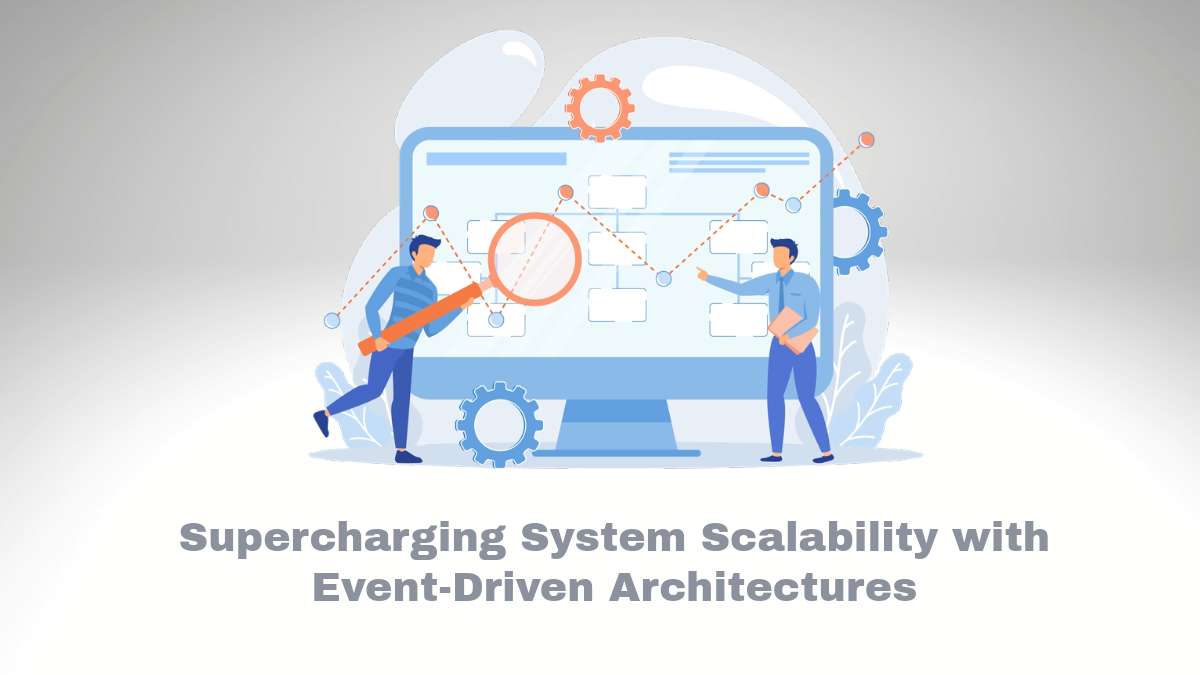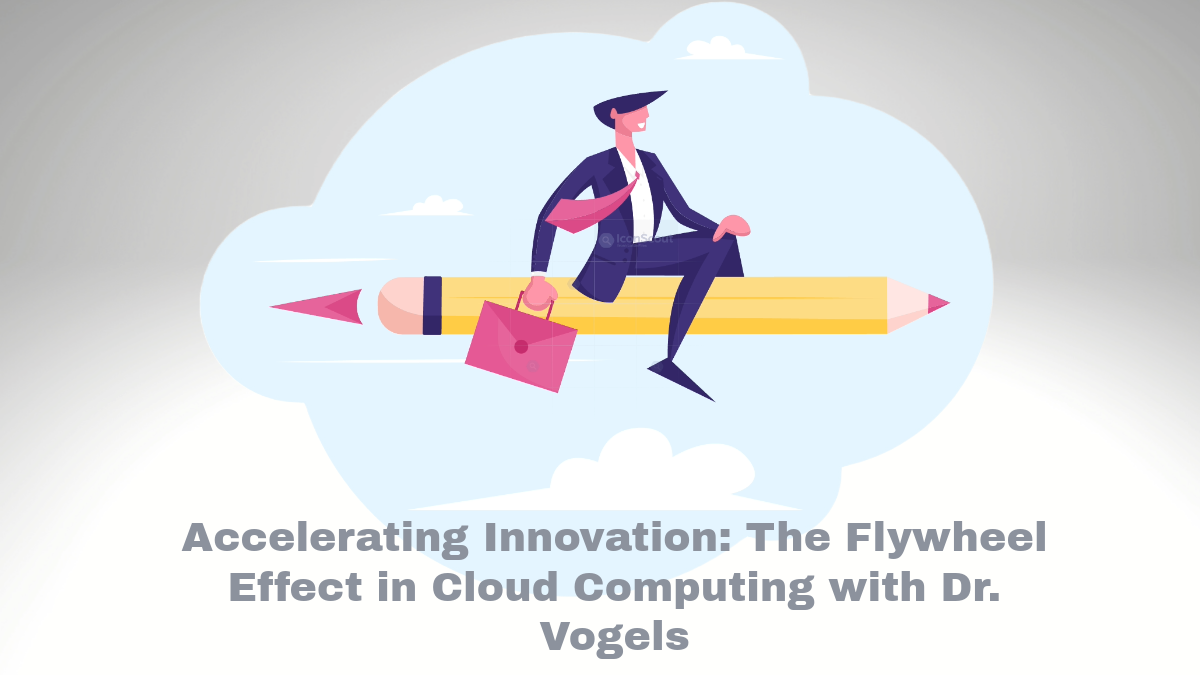Supercharging System Scalability with Event-Driven Architectures

Can traditional system architectures keep up in a world where responsiveness and real-time engagement have become the expectations? Picture a system that responds immediately to user actions and can handle thousands—if not millions—of parallel requests without batting an eyelid. Welcome to the realm of event-driven architectures (EDA)—the game changer revolutionizing our interaction with digital interfaces. This unique approach helps systems scale flexibly according to demand, ensuring optimal use of resources and efficient performance under varying loads.
But how exactly does this dynamic engine power scalable systems?
You’ll find answers here if you’ve been seeking clarity on these complex contemporary mechanisms. In this comprehensive exploration of event-driven architecture, we will understand its key features and the benefits it offers in terms of scalability. You’ll also be guided through implementing EDA for unprecedented scalability in your applications.
Additionally, real-world examples will clearly show how EDAs are shaping tomorrow’s most scalable systems. By the end of this article, you’ll have an insightful perspective on EDA’s potential evolution and its predicted impacts on future system scalability. A pivot toward these advanced architectures might be the tipping point leading us toward more efficient digital landscapes!
Understanding Event-Driven Architectures
In the journey to comprehend advanced systems and interfaces, it is necessary to delve into the essence of Event-Driven Architecture (EDA). EDA is a delicate system where the construction of applications relies on events — occurrences that reflect state changes. These may be simple circumstances, such as a click made by a user, or complex stages, like completing a lengthy transaction process.
Definition of Event-Driven Architecture
Defining EDA is an essential approach to grasping how these distinct structures work. It is a design technique where software components perform actions—commonly known as responses—to different events they receive. It’s similar to having an orchestra, with each instrument responding distinctively upon every beat count from the conductor, harmonizing to create beautiful music.
Characteristics of Event-Driven Architectures
To understand EDA more holistically, visualizing their distinctive aspects becomes necessary. These architectures have an inherent asynchronous nature that allows components within the system to operate independently until certain conditions—events—are met. They rely heavily on event-processing agents that detect and respond correspondingly to potential scenarios or triggers.
A notable characteristic is its loose coupling; different parts of an event-driven software work together without necessarily being interconnected (tightly knit) with others. This allows components in the infrastructure to evolve independently over time, thus ensuring overall system longevity and adaptability over protracted periods.
The Role of Event-Driven Architectures in Scalability
About how EDAs are revolutionizing scalability, there’s much to explore. Their biggest advantage lies in their ability to efficiently accommodate increased workloads while maintaining optimal resource use, correlating directly with application scalability—an essential factor for modern technology growth.
Scalability pertains to a system’s capacity for expansion or reduction per demand without sacrificing performance quality or user experience. This feature has positioned EDAs as towering pillars in managing scaling issues better than traditional architectures.
Key Features that Enhance Scalability
Certain principles make EDAs stand out in the vast landscape of scalability refinement. For starters, their reactive nature means they are always ready to handle increased user traffic since they operate based on event occurrence rather than by constant functioning. Also, their parallel data processing capabilities enhance the ability to manage a ballooning amount of data without straining resources.
In addition, redundancy—the availability of spare parts or systems—is another highlighting feature. It lowers system risks and ensures seamless service continuation, even when some components fail, making EDA a desired methodology for business-critical applications that demand high reliability and availability.
Another key aspect is EDA’s adaptability—it allows systems to adapt smoothly to various operation environments and user expectations, maintaining their performance standards at any scale of use. This goes a long way in software progression without requiring heavy modifications—an unquestionably beneficial attribute for organizations seeking a smooth scaling journey.
Through exploring real-world applications such as Uber’s dispatch system or media streaming services like Netflix, which utilize event-driven architectures to manage millions of subscribers worldwide effectively, we can further comprehend the efficacy and significance of EDA in the context of scalable systems.
Benefits of Increased Scalability in System Performance
Scalability radically improves the performance potential of systems. With enhanced scalability, a system can manage to augment its workload efficiently whenever demand escalates. It directly contributes to the optimal use of resources by aligning them according to changing needs.
The advantage here is twofold – first, it helps avoid resource wastage during periods of low usage through dynamic allocation, and second, it enables accommodating heavier workloads when demand peaks. The end result is a stellar user experience as the system performance stays uniform irrespective of load variations.
Moreover, scalability fosters business growth as systems can accommodate expanding operations without requiring substantial upgrades or replacements. Overall, improving scalability therefore, becomes essential for businesses seeking efficient resource utilization and sustained growth.
How to Implement Event-Driven Architecture for Enhanced Scalability
Implementing an event-driven architecture (EDA) offers one strategy to enhance system scalability. The heart of EDA lies in software components responding dynamically to corresponding events—akin to an orchestra playing in harmony with the conductor’s movement.
To implement EDA, begin by identifying the pieces that would engage and react based on occurrences or “events”. Then design the pathways for data flow, ensuring asynchronous transmission and loosely coupled interactions between individual components.
While developing an application using the EDA technique, focus should be given to making each component capable of evolving independently over time. This is crucial because the changing business landscape will often require alterations or amendments in the application, which should not disrupt your system.
Steps in Developing an Event-Driven Architecture
To create an EDA-based scalable application, follow these general steps:
- Identify Key Components: Start by determining which elements play a pivotal role within your system.
- Define Events: Organize how components interact with each other via certain ‘events.’
- Design Workflows: Plan out workflows and establish how data will flow from one component to another.
- Develop and Test: After the design phase, develop and rigorously test your system to ensure optimal functioning.
- Monitor: Continuous monitoring of the developed system is essential for early detection and rectification of potential issues.
Key Considerations When Implementing Event-Driven Architectures
While implementing EDAs, take into account factors such diversification of functions, redundancy planning, synchronization among various modules, and seamless data processing across the system. Additionally, prioritize these qualities:
- Reactive Nature: EDAs respond swiftly to events, requiring every component to react to changes or occurrences.
- Parallel Data Processing: Accelerate operations by adopting parallel processing methods that allow multiple actions at once.
- Redundancy: Reliable systems often have redundancy measures in place so ensure elements can independently fulfil tasks even if parts fail.
- Adaptability: Components should have an adaptive nature whereby they can flexibly alter as per changing circumstances.
Real-world Examples of Scalable Event-Driven Architectures
Broadly adopted in scalable systems today, we find several real-world examples showcasing the effectiveness of EDA.
Uber’s dispatch mechanism stands out as a viable instance. Uber uses EDA in their dispatch solutions to meet real-time needs efficiently and maintain service uniformity irrespective of the scale or geographic spread.
Similarly, Netflix uses EDA within its media distribution platform for catering content optimally to millions of subscribers around the globe.
Case Study: Improved Scalability Through Event-Driven Architecture
A case study placing EDA in the spotlight is Amazon’s recommendation engine. When someone orders a product on Amazon’s site – it triggers an event. Following this process doesn’t bring to a halt ongoing routines but instead conducts analysis in parallel with other operations.
The outcome? A list suggests other products you might like based on your order history and preferences. By efficiently utilizing EDA, Amazon demonstrates how scalability is achievable without compromising speed or user experience.
The Future of Event-Driven Architectures and Scalability
Potential Evolution and Advancements in Event-Driven Architectures
As we embrace the evolving digital era, we must explore how event-driven architectures (EDA) might transform. As they become an integral part of tech-centric organizations, EDAs will likely undergo substantial innovation. For instance, we can witness more intelligent event routing systems leveraging machine learning algorithms for better decision-making.
Moreover, new developments may also be seen in event processing frameworks. These could provide more advanced features like complex pattern detection or rapid event filtering capabilities. Technologies such as AI and Big Data might be integrated within these architectures, leading to highly efficient user-triggered responses.
Another area of potential progress lies in creating interoperable EDAs that will allow events to traverse smoothly across different software applications or even between different organizations. This will pave the path for diverse software ecosystems to communicate and react based on each other’s events.
Predicted Impact on Scalability and Efficiency
The advancements mentioned above would significantly impact the scalability of systems. As EDAs grow smarter with machine learning integrated event routing, systems’ ability to scale according to demand will become incredibly refined. This enhanced scalability would mean optimal resource utilization, increasing system efficiency.
With sophisticated event processing frameworks in place, parallel data processing will help manage larger workloads and do so at unprecedented speeds. Additionally, redundancy mechanisms may improve with progress in EDA design that ensures better fault tolerance without compromising user experience when scaling up.
By leveraging interoperable EDA configurations, scalability won’t remain a concern limited to a single system or application but will expand across entire network elements within and beyond individual organization boundaries. This means creating genuinely scalable digital ecosystems that ensure seamless, even flow across multiple nodes regardless of capacity demands.
Moreover, EDAs will become more adaptable as they advance—better adjusting themselves according to workload gradients dynamically managing resource allocation while maintaining system integrity and speed even when handling colossal data volumes.
These potential improvements are expected to make EDAs a cornerstone in next-generation digital transformation strategies—opening avenues to flexible scaling capacities, unprecedented operational efficiency, and revolutionary user experiences.
Conclusion
In conclusion, the advent of event-driven architectures (EDAs) marks a significant shift in how we interact with digital interfaces. EDAs provide unprecedented scalability and maximize resource efficiency, ushering in a new era of advanced and innovative applications.
| Topic | Description |
|---|---|
| Event-Driven Architecture | A design technique where software components respond to events. |
| Characteristics | EDA has an asynchronous nature, loose coupling, and relies on event-processing agents. |
| Role in Scalability | EDAs efficiently accommodate increased workloads while maintaining optimal resource use. |
| Key Features | Reactive nature, parallel data processing, redundancy, and adaptability. |
| Benefits of Scalability | Improved resource utilization and sustained business growth. |
| How to Implement EDA | Identify components, define events, design workflows, develop, test, and monitor. |
| Real-world Examples | Uber’s dispatch system, Netflix’s media distribution, and Amazon’s recommendation engine. |
| Future of EDA | Potential advancements in event routing, event processing, and interoperability. |
| Predicted Impact | Enhanced scalability, efficiency, and adaptability in systems. |
Real-world examples like Uber’s dispatch system and Netflix’s media streaming services are powerful testaments to the potential and reach of EDAs. While the implementation process requires careful consideration for aspects such as reactive nature, parallel data processing, redundancy, and adaptability, the benefits—ranging from optimal resource utilization to sustained business growth—are immense.
Exciting advancements, including intelligent event routing systems and interoperability, are on the horizon that promises to make EDAs even more adaptable and responsive. As you reflect on these insights, consider how adopting an EDA could redefine your own strategies and processes. Remember that scaling flexibly and efficiently in this ever-evolving digital landscape is not merely an advantage—it’s a necessity for survival and growth.




Comments